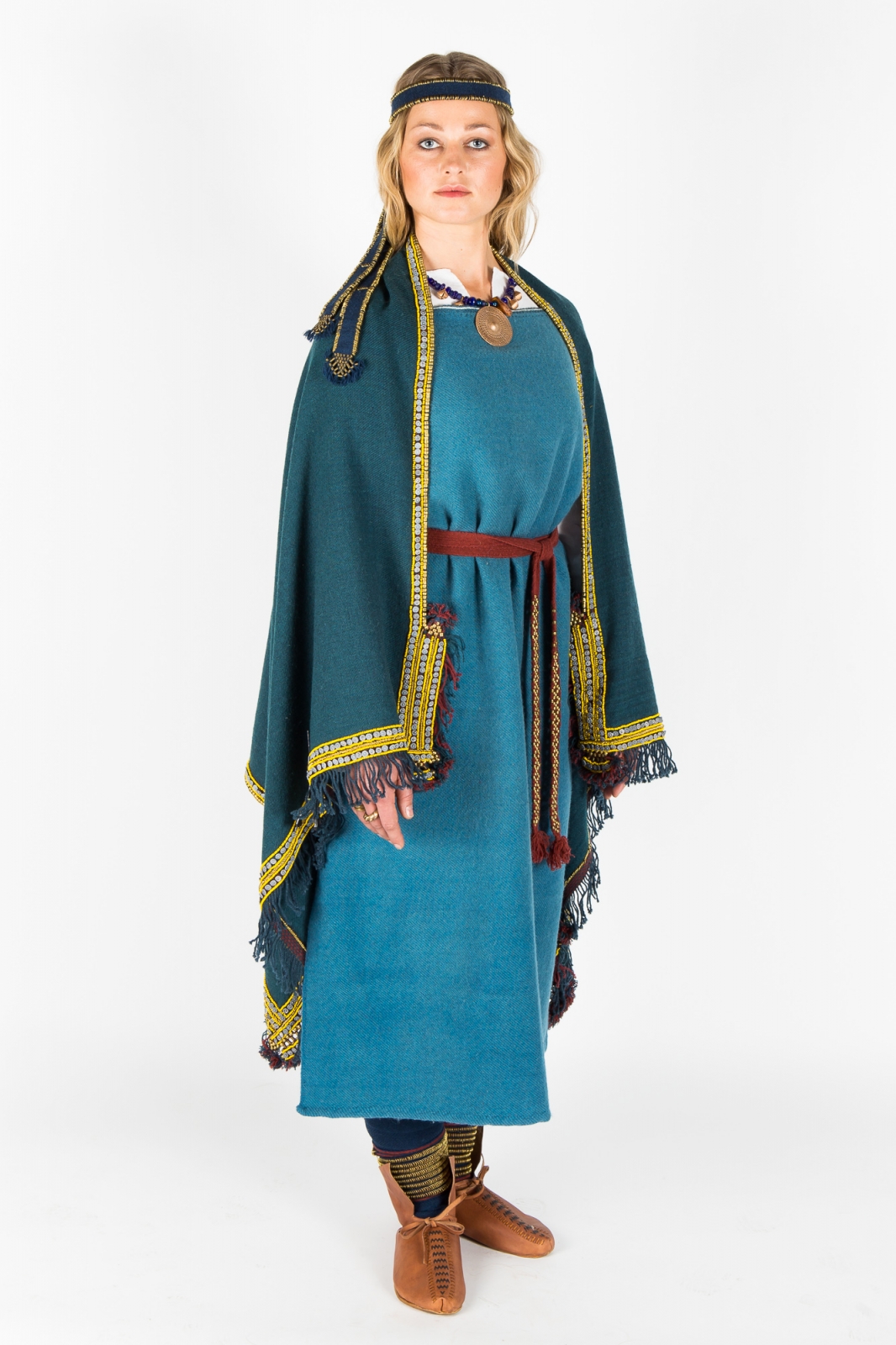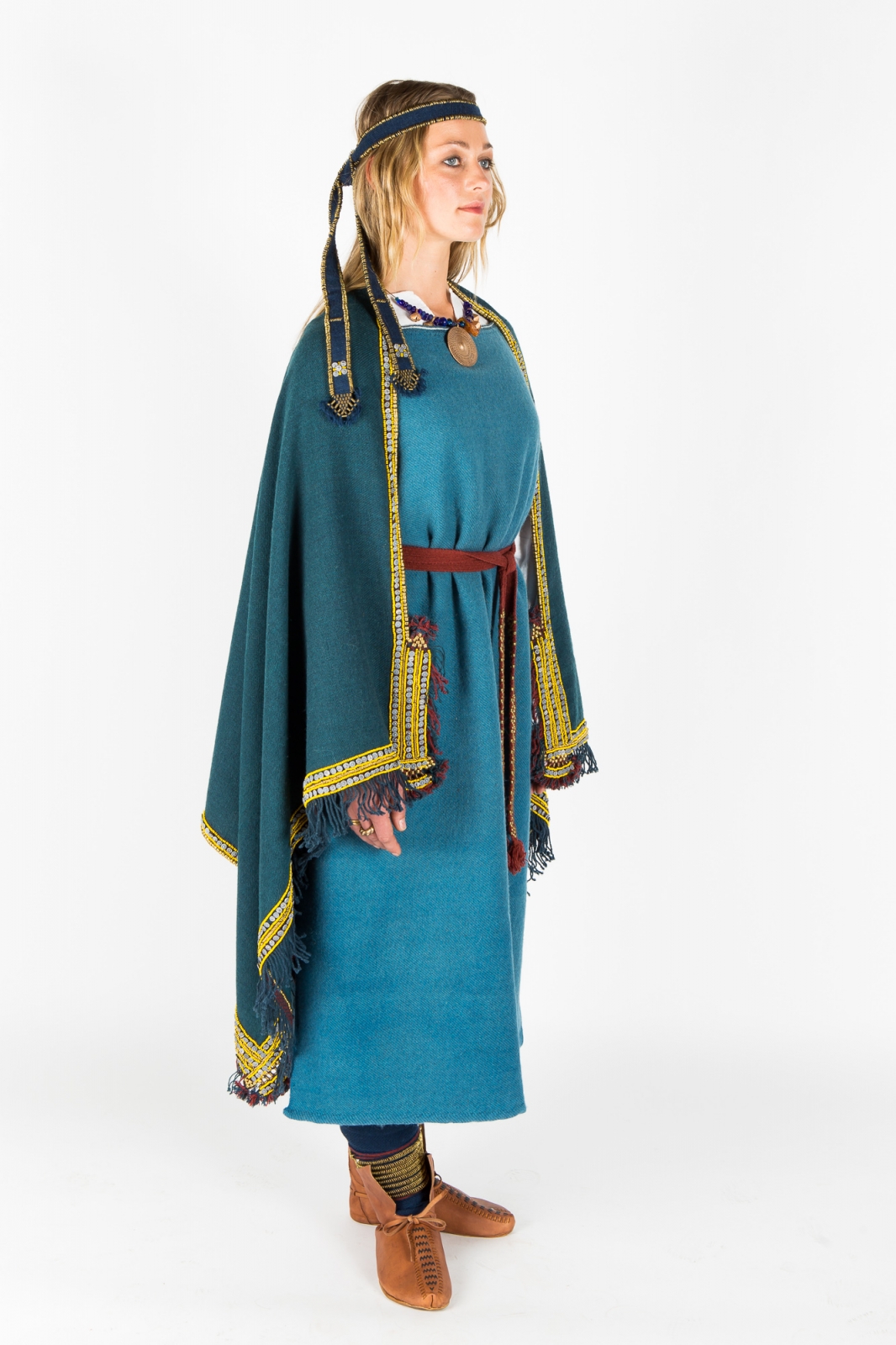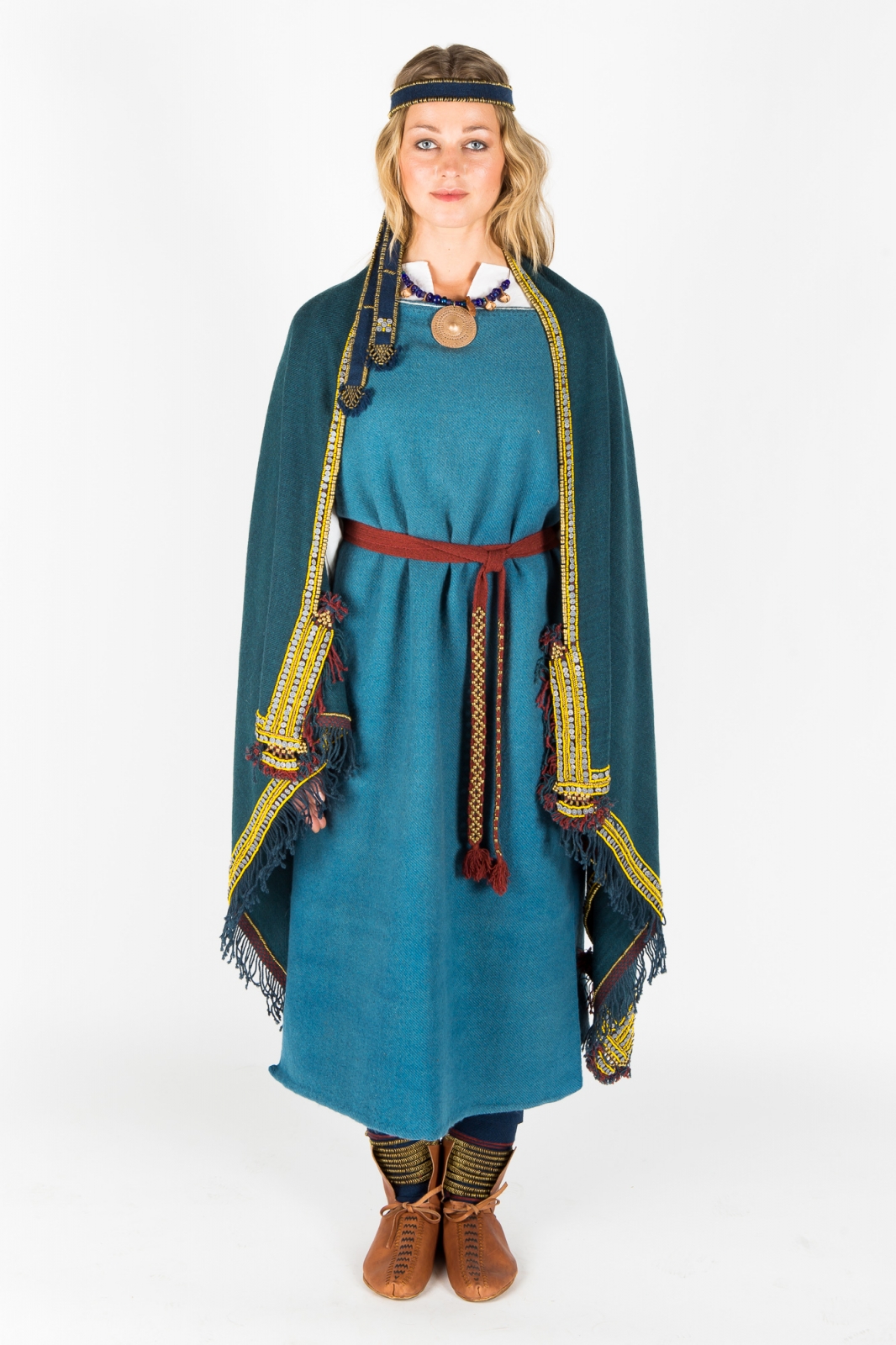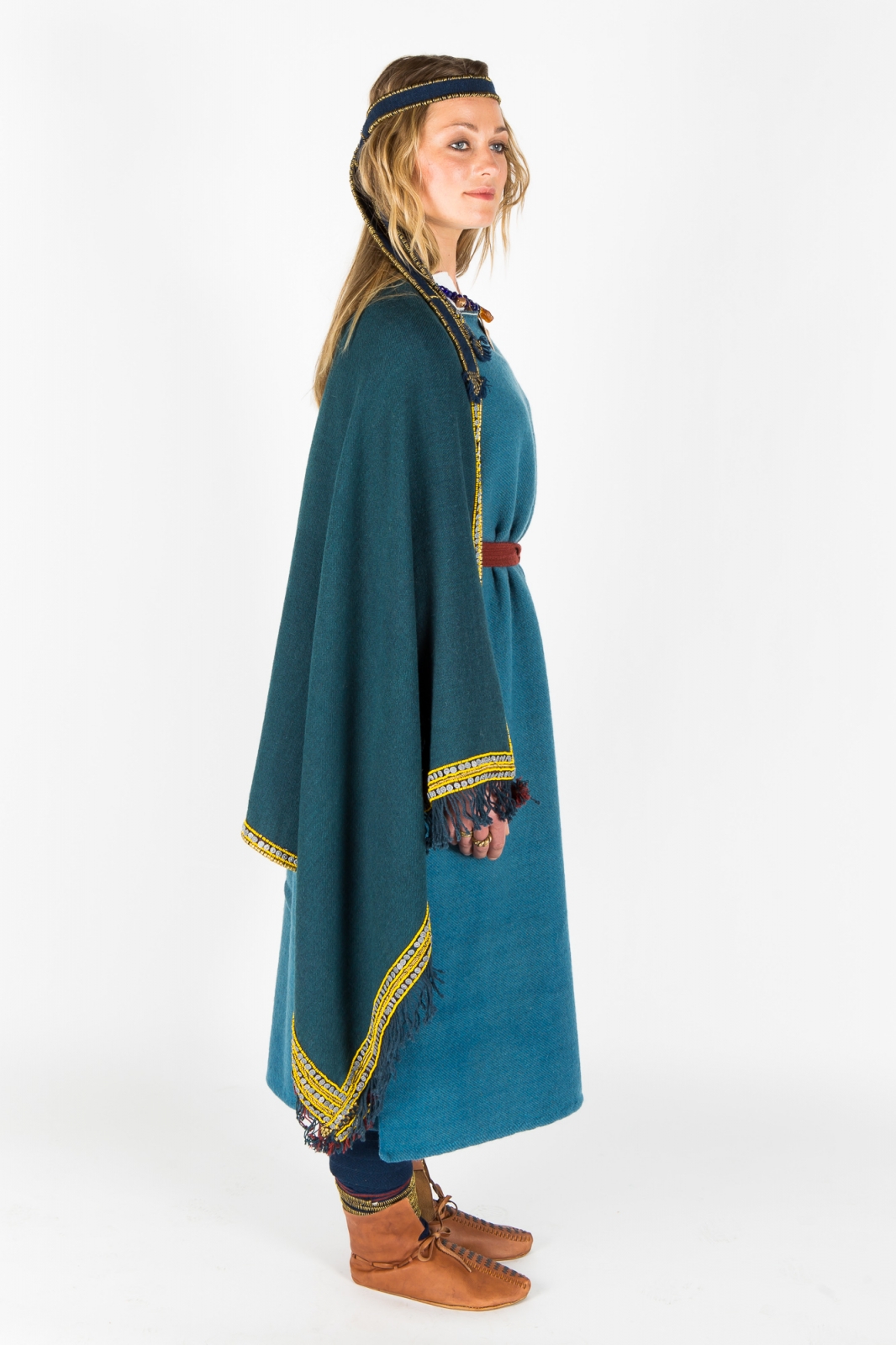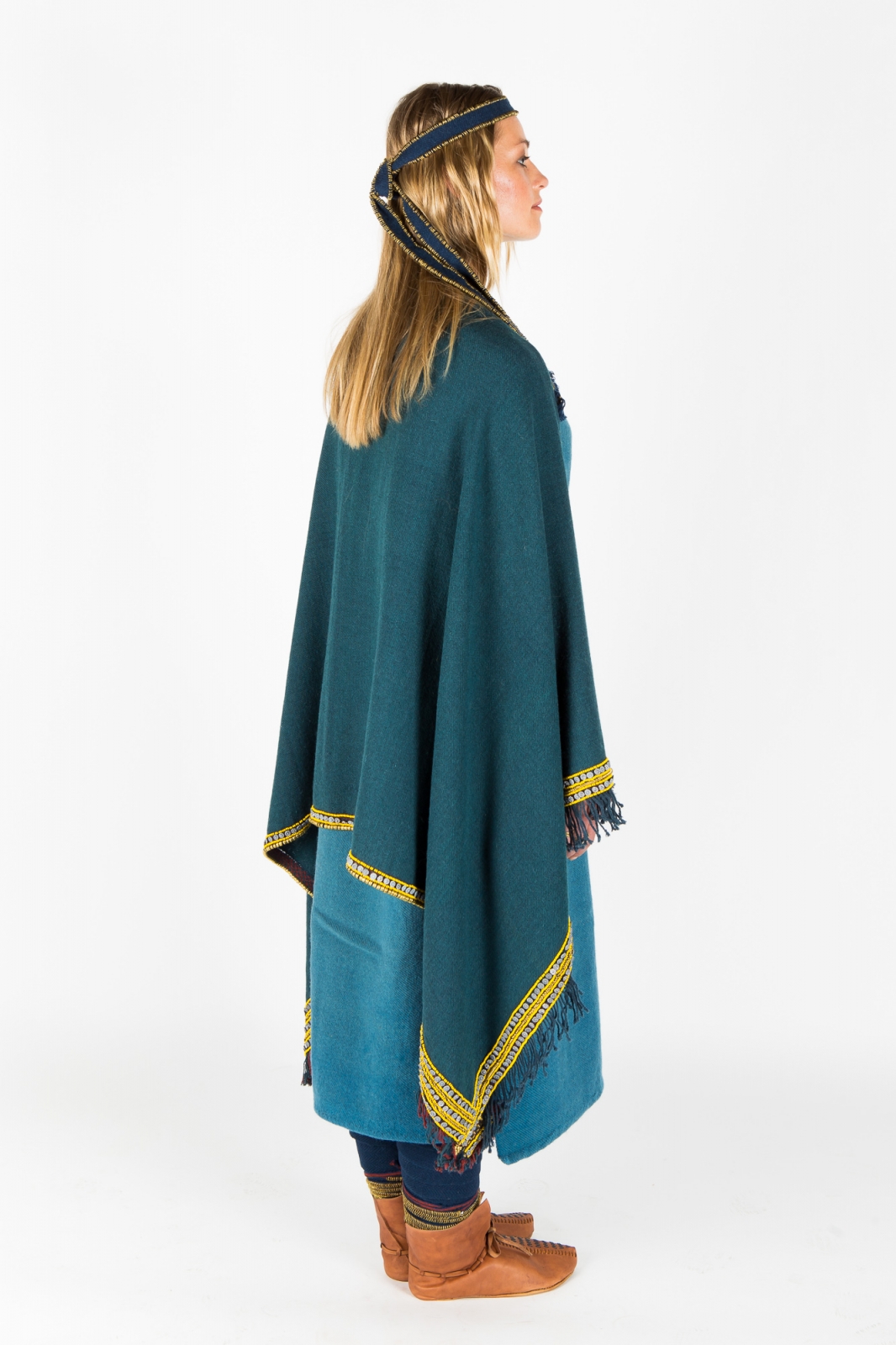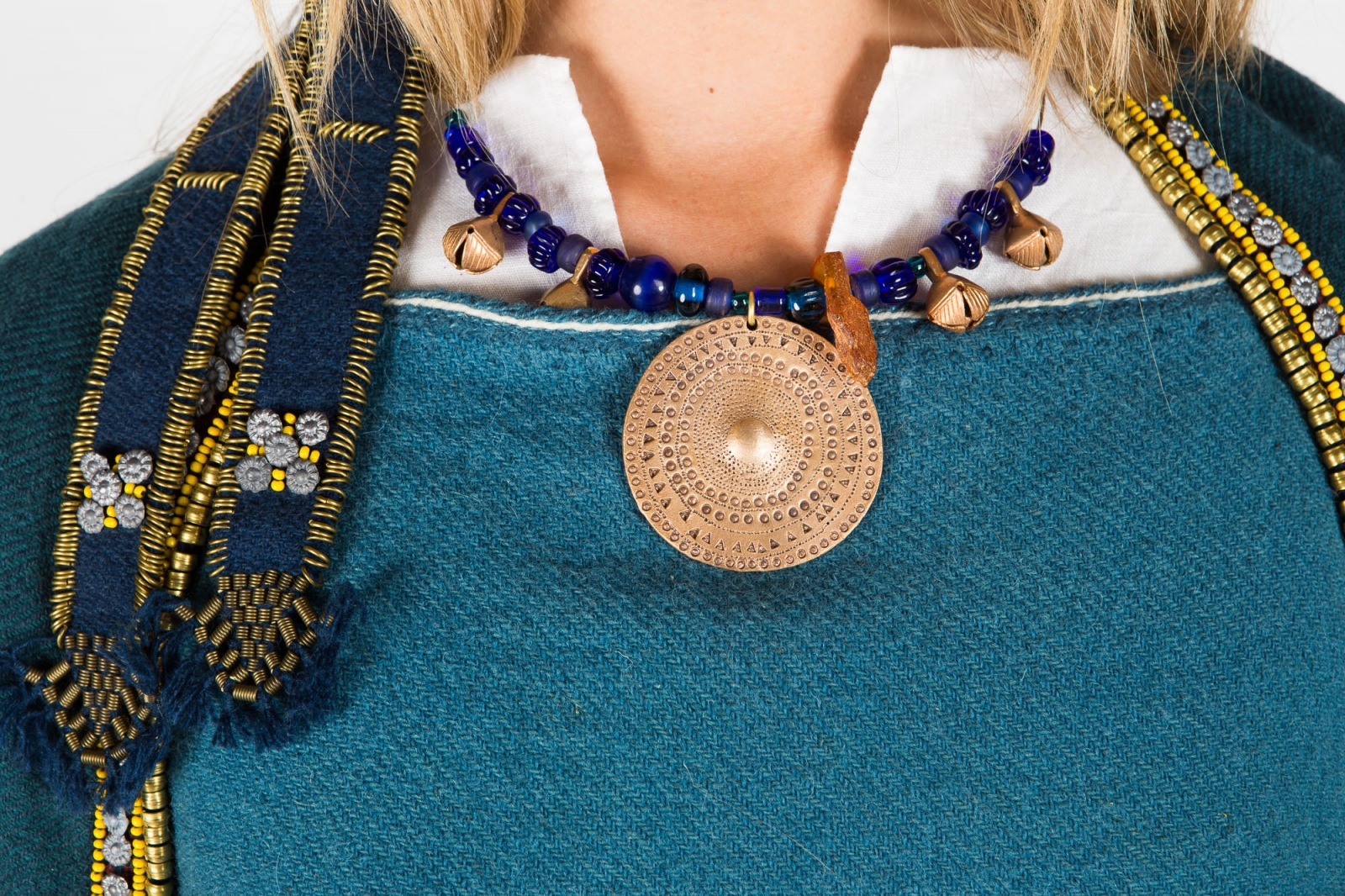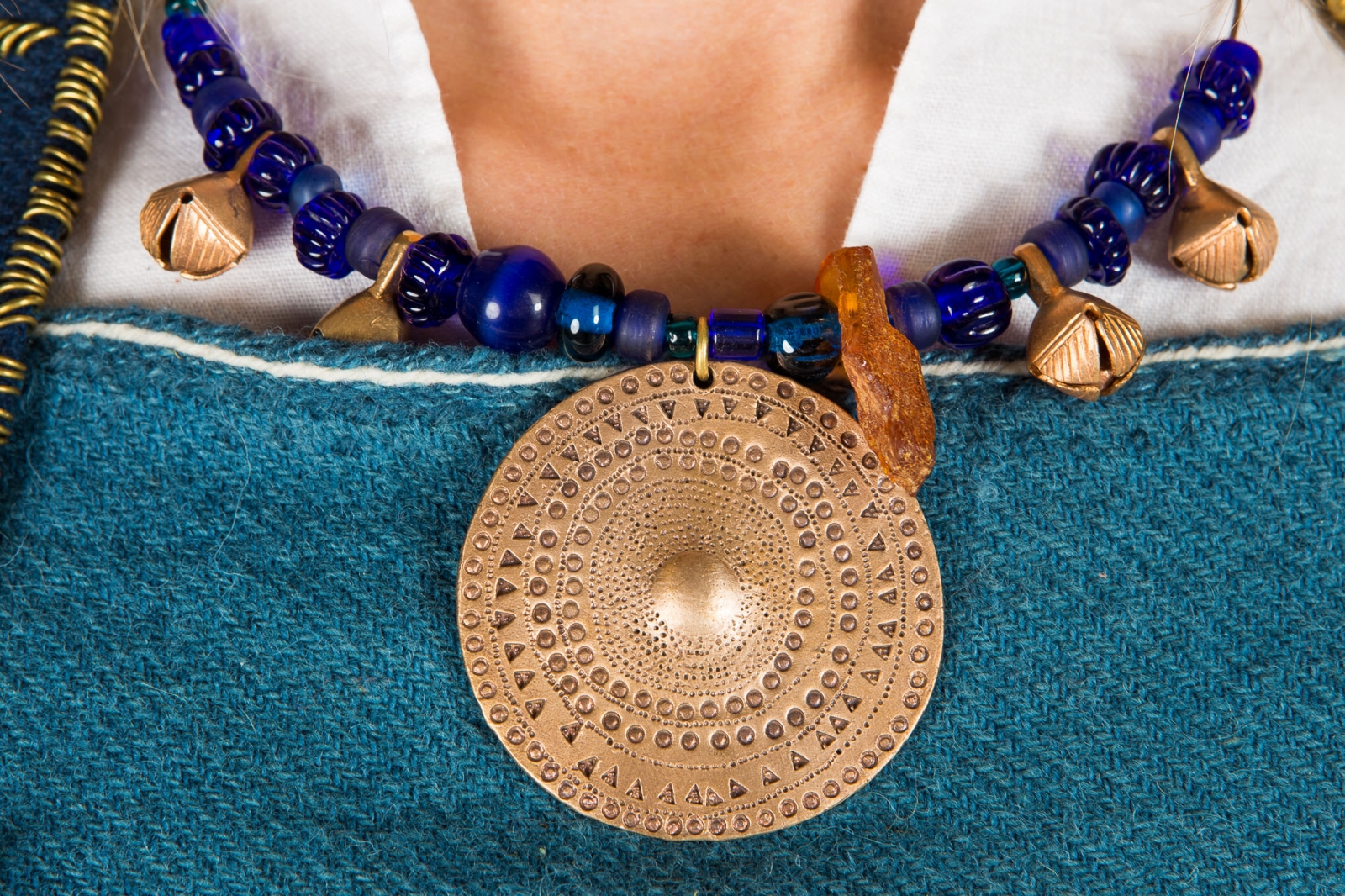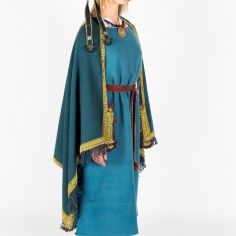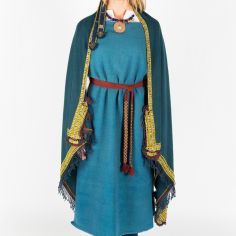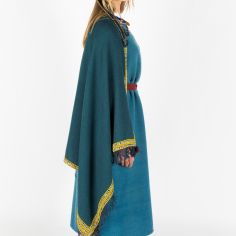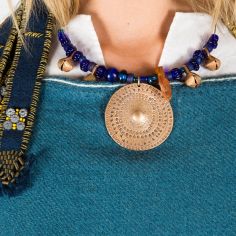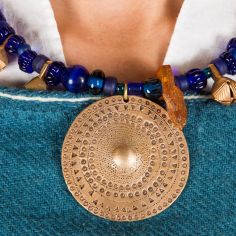Reconstruction of the 13th century Vends woman's costume
Brief information
The arrangement and the decoration of the Vends (a group of the Baltic Finnish population, referred to in the 13th century Chronicle of Henry of Livonia who lived in the North-western part of Kurzeme, but as a result of the Curonian expansion moved closer to Riga. They later settled within the territory populated by the Latgallians near Cesis) costume shares similarities to those of the Livs. In the 13th century the traditional decorations of the woolen shawls were complimented by yellow glass paste beads. They, together with small rings and rosettes, were used to border the edges of the fabric. Depending on the width of the decorative bands that bordered the fabric, tassels were formed along the edges and corners of the garment. The metal crown (vainags) was replaced by narrow decorated hair bands that tied behind the head. Metal decorations were included on the ends of belts, however the adornments in general, were simpler and used in smaller numbers at this time. Typically found adornments from this period consisted of a special decorative pin and bead necklaces – the beads threaded onto metal wires.
History and Origin
Archaeological costumes are garments that have been reconstructed based on materials found in excavations – from fragments of cloth, decorations and adornment. Archaeological excavations unearthing evidence dating back to the 16th century, give us an understanding of what local populations – the Curonians, Semigallians, Selonians, Latgallians, as well as Livs and Vends, wore.
The excavated materials have been preserved from the long standing tradition of dressing for the journey into the 'afterlife' whereby our Ancestors dressed in their best – rich, festive and adorned clothing. The oldest materials from which we are able to reconstruct archeological costumes, date back to the 7th century. In the centuries following, it appears each ethnic group developed its own distinct traditions for costume making. Over time newer traditions replaced the material culture of those ancient people – however, these newer traditions bridged traditional materials with the latest and more modern trends of that time. This eventually led to the 19th century Latvian traditional national costume that we all know today. This costume looks different, not only in its appearance/style, but its technical composition – when compared to its predecessors.
Archaeological costumes are mostly dark blue in color and are characterized by the use of metal decorations, the style of which varies between each tribe. Part of the ancient tradition of costume-making survived throughout the ages, so that despite changes along the way, there has remained an unaltered form reflected through all costumes.
